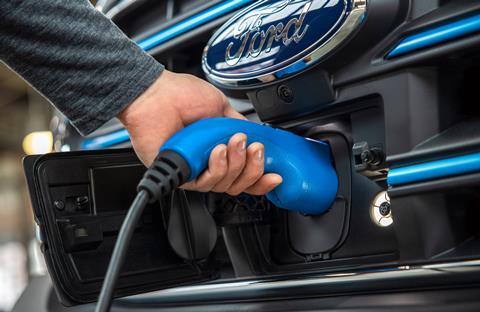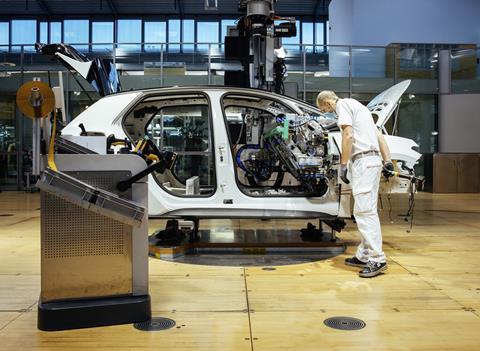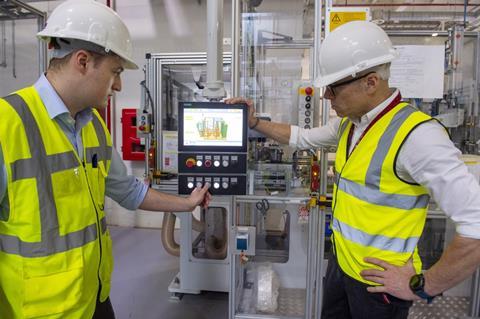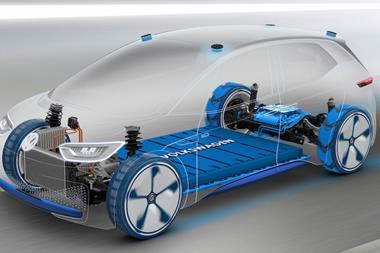As the automotive industry electrifies, manufacturing is changing dramatically and OEMs are using big data to keep pace with that change. Increasingly moving into the world of tech, old quality control processes may no longer suffice since a lot of EV components cannot be reworked like traditional equivalents. Manufacturing has to be ultra-precise like never before.

Producing electric motors at the scale required today is quite the adjustment for a big legacy OEM like Ford. “The automotive mindset is that we want to be able to check that it’s a good part and verify that before we give it to the customer, but in many cases, you’re creating things that you can’t check unless you destroy the part,” said Chris White, electrification manager, manufacturing engineering during the recent AMS Livestream on electrifying production.
Watch the full livestream on demand here
This challenge was also acknowledged by Gareth Tomkinson, business development manager at Renishaw, adding: “Once these things are together – especially EV parts at the moment – they’re together for good; there’s no pulling them apart and making small adjustments.”
It means that manufacturers have to find ways to check during the manufacturing process that everything is done right – keeping tabs on the process, rather than the product, because otherwise they run the risk of producing scrap for hours.
Tracking the manufacturing process is not a small task, however. It effectively entails collecting data from every action and every sensor on the production line, and even environmental factors. In other words, the key is big data.
Small big data
Paradoxically, even big data tends to start small in a way, as both VW and Ford started with relatively limited pilot projects. At Volkswagen, the ‘Transparent Factory’ plant in Dresden was the first one to produce only fully electric vehicles, with the e-Golf, and is now the second location producing the MEB platform-based ID.3, after Zwickau.
“We are not only doing the production here, but we also have a lot of research activities in smart production technologies, in digital solutions, how to combine all these big data approaches, and how to upscale it into series production,” said plant manager Danny Auerswald. “We learn the ideas here and then we migrate it into other plants to benefit from the lessons learned here.”
For more on big data approaches, digital twins, tools and production connectivity, register for the upcoming AMS Livestream on May 26 on the Factory of the Future: The Software-Defined Assembly Line. Featuring Audi, ABB and Cosmo Tech.
Ford is taking a similar pilot plant approach as part of the E:Prime project, a UK consortium partly funded by the Advanced Propulsion Centre and Innovate UK to develop high-volume manufacturing of next-generation powertrains in the UK. Ford has built a fully operational pilot facility at its existing Dunton R&D campus that makes stators, rotors and battery arrays.
A large number of the partners in the project are there to research how manufacturing plants can better handle data. National Instruments is working on data acquisition, Siemens is working on digitisation and managing the manufacturing data, and data visualisation company Signal noise is helping Ford to display its data differently and draw conclusions from it.

To get the most out of that data, you need the expertise to analyse it, so White said that Ford is now also putting apprentices through data analytics degrees and tuning apprenticeships towards analytics, not just the traditional mechanical engineering.
Auerswald agreed that drawing meaningful conclusions from the massive amount of data of data that a car factory can generate is the real challenge. Dresden is the first plant in the network to try out on a meaningful scale how the cloud can be best used to interface with the plant, which data should be shared and collected, and how it can be usefully analysed.
He explained: “And so what we are doing here is on a smaller level compared to Zwickau for instance, is to submit this data in the cloud to see what connections are really necessary in order to share that in an efficient way with other plants, because if you just submit all the data no one is able to work with it.”
Quality loops
He added that Volkswagen is already seeing the synergies thanks to the shared MEB platform, particularly in the area of welding. When an issue is detected, this can be shared with the other plants so they can check their welding parameters and confirm whether they have the same issue. Auerswald said that he expects quality loops to improve tremendously.
Quality loops between manufacturing locations are a major asset, but the loops inside the plant are just as important, particularly given the potential for in-process waste due to EV components that cannot be reworked or non-destructively tested.

White said that it’s going to take a long period of learning to truly understand the EV manufacturing process in the same way that OEMs master the processes for ICE vehicles, and added: “big data is going to play a huge part in measuring in as many places in the process and understanding the relationship between one part of the process and the rest of it, and the finished product.”
Volkswagen particularly sees a potential for quality loops through in-line measurement using optical tools. For example, when the doors are fitted to the car, optical sensors can evaluate the fit, collect this data in the cloud and send it back to the body shop, or even to the press shop. That way, the source of any issues can be accurately tracked down and corrected.
Renishaw can see an advanced control system changing quality control from a reactive process to something much more proactive. “You’re no longer a goalkeeper,” said Tomkinson. When such a system is working well, information is constantly being passed upstream, and even when everything is working correctly, it may be possible to tell when a process is drifting towards its limits and make a small adjustment before parts need to be rejected or there is a line stoppage.
“Just one of the things that this means is that it becomes possible to take advantage of technologies and connectivity to create manufacturing processes that have an inbuilt capability to both self-monitor and self-correct whilst operating under a wide range of variable conditions,” Tomkinson explained. This ultimately helps to create the flexibility needed to cope with rapidly changing technology.



































No comments yet